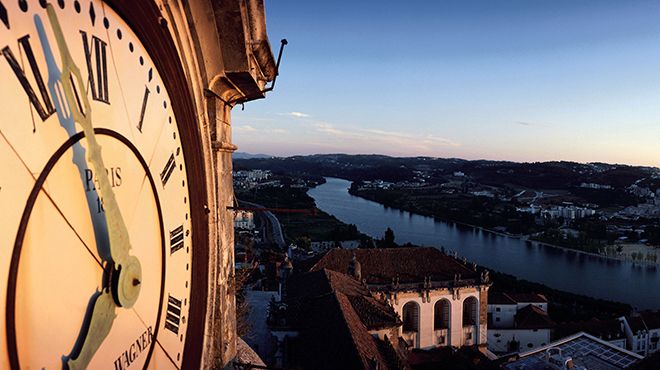Coimbra

Coimbra
Towns and Villages
Long ago, this site was occupied by the Celts, but the process of Romanisation brought a great cultural transformation to this region. The presence of the Romans is still visible in the various archaeological remains housed at the Museu Nacional Machado de Castro, built over the cryptoporticus of the Civita Aeminium, the forum of the Roman city. After them, between 586 and 640, came the Visigoths, who altered the name of the town to Emínio. In 711, it became a Moorish and Mozarab city. In 1064, the city was conquered by the Christian Fernando I of Castile and governed by the Mozarab Sesnando.
The most important city to the south of the River Douro, it was for some time the residence of the Count Dom Henrique and Dona Teresa, the parents of the first king of Portugal, Dom Afonso Henriques, who was born here. It was the latter king who integrated the city into the Portuguese territory in 1131. Dating from this time are some of the city´s most important monuments: the Sé Velha (Old Cathedral) and the churches of São Tiago, São Salvador and Santa Cruz, representing the religious authority and the various orders that became established here.
Coimbra was the setting for the forbidden love of Dom Pedro I (1357-67) and Dona Inês, a lady at court. Inês was executed at the orders of the king Dom Afonso IV, who saw in this romance the danger of Portugal being submitted to the rule of Castile. An inspiration to poets and writers, their story still forms a major part of the city's rich heritage.
Coimbra was the capital of Portugal during the Middle Ages, but it was the Renaissance that transformed the city into a place of knowledge, when Dom João III (1521-57) decided to move the University to the city on a definitive basis, whilst at the same time numerous colleges were created to provide an alternative to the official form of teaching.
In the 17th century, the Jesuits arrived in the city, immediately announcing their presence with the building of the Sé Nova (New Cathedral). In the following century, the royal work instituted by Dom João V (1706-50) was to enrich some of Coimbra´s monuments, including the University. Dom José I (1750-77) also introduced some alterations into the city through the influence of his minister Marquês de Pombal, particularly in the field of education.
At the beginning of the 19th century, the French invasions and the Portuguese liberal wars were to mark the beginning of a period of great agitation that brought no great developments to the city. Since then, it has been the students who have brought most changes to Portugal's quintessential university town.
There are several routes that you can follow to discover more about the heritage to be found in Coimbra. Following the layout of the city until the 19th century, we suggest that you begin with two walking tours, one through the Upper Town and the other through the Lower Town.
The most important city to the south of the River Douro, it was for some time the residence of the Count Dom Henrique and Dona Teresa, the parents of the first king of Portugal, Dom Afonso Henriques, who was born here. It was the latter king who integrated the city into the Portuguese territory in 1131. Dating from this time are some of the city´s most important monuments: the Sé Velha (Old Cathedral) and the churches of São Tiago, São Salvador and Santa Cruz, representing the religious authority and the various orders that became established here.
Coimbra was the setting for the forbidden love of Dom Pedro I (1357-67) and Dona Inês, a lady at court. Inês was executed at the orders of the king Dom Afonso IV, who saw in this romance the danger of Portugal being submitted to the rule of Castile. An inspiration to poets and writers, their story still forms a major part of the city's rich heritage.
Coimbra was the capital of Portugal during the Middle Ages, but it was the Renaissance that transformed the city into a place of knowledge, when Dom João III (1521-57) decided to move the University to the city on a definitive basis, whilst at the same time numerous colleges were created to provide an alternative to the official form of teaching.
In the 17th century, the Jesuits arrived in the city, immediately announcing their presence with the building of the Sé Nova (New Cathedral). In the following century, the royal work instituted by Dom João V (1706-50) was to enrich some of Coimbra´s monuments, including the University. Dom José I (1750-77) also introduced some alterations into the city through the influence of his minister Marquês de Pombal, particularly in the field of education.
At the beginning of the 19th century, the French invasions and the Portuguese liberal wars were to mark the beginning of a period of great agitation that brought no great developments to the city. Since then, it has been the students who have brought most changes to Portugal's quintessential university town.
There are several routes that you can follow to discover more about the heritage to be found in Coimbra. Following the layout of the city until the 19th century, we suggest that you begin with two walking tours, one through the Upper Town and the other through the Lower Town.




 Explore
Explore 
 Remember and Share
Remember and Share 


